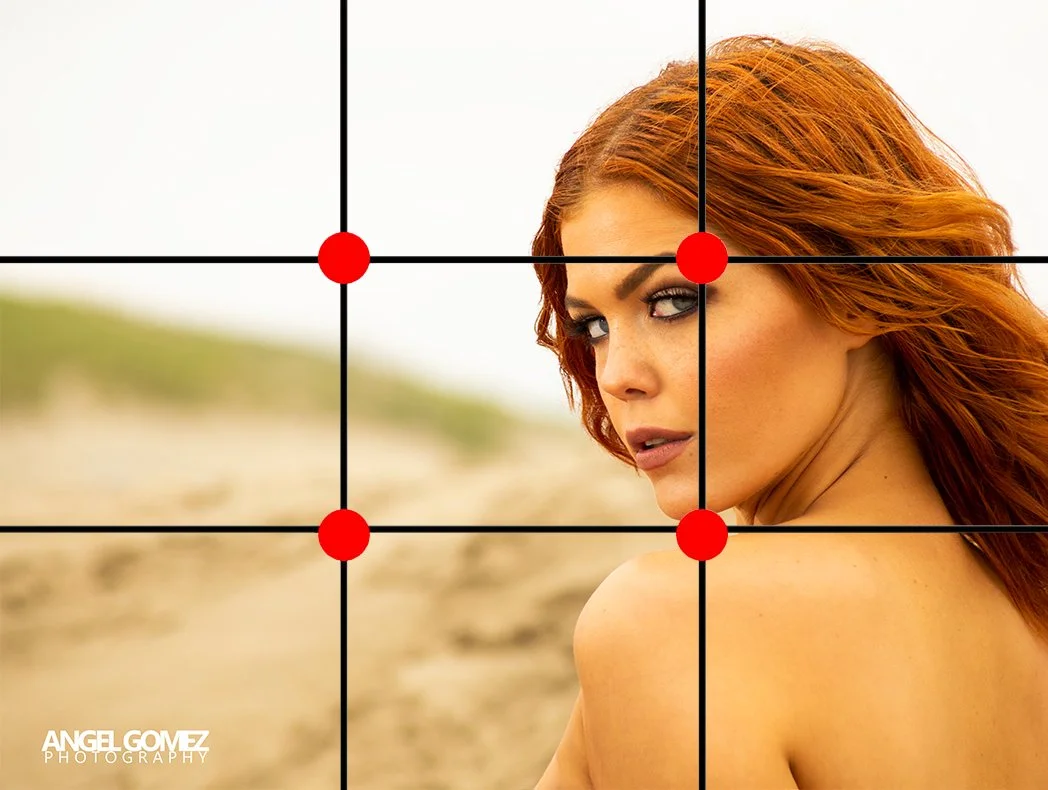The Rule of Thirds in Photography: A Beginner’s Guide to Better Composition
When it comes to capturing stunning, professional-looking photos, composition plays a crucial role. One of the most fundamental and time-tested composition techniques is the Rule of Thirds—a guideline that can instantly elevate your images by creating balance, flow, and visual interest.
In this first installment of our Composition Series, we’ll explore what the Rule of Thirds is, why it works, and how to use it effectively in your photography.
Rule of Thirds
What Is the Rule of Thirds?
The Rule of Thirds is a compositional technique that divides your image into nine equal parts by overlaying two horizontal and two vertical lines across the frame—much like a tic-tac-toe grid. The four points where these lines intersect are called “power points” or “sweet spots,” and placing key elements along these lines or at these intersections makes your image more balanced and naturally pleasing to the eye.
Why Does the Rule of Thirds Work?
The human eye tends to avoid perfectly centered subjects. Our brains are more engaged by slight asymmetry and tension—something the Rule of Thirds provides. By offsetting your subject from the center, you create a dynamic scene that feels intentional, thoughtful, and aesthetically engaging.
How to Use the Rule of Thirds in Your Photography
1. Turn On the Grid
Most digital cameras and smartphones allow you to enable a Rule of Thirds grid in the viewfinder or screen. Turn it on—it’s a simple and effective visual aid.
2. Position Your Subject Along the Grid Lines
Try placing your main subject where the grid lines intersect. For example:
In a portrait, align the eyes along the top third line.
In a landscape, let the horizon sit along the top or bottom third.
In street or action shots, let movement or direction follow the grid.
3. Leave Room for Balance
If you place your subject to the right of the frame, consider what’s on the left to create balance. Negative space (empty or minimal background) can be just as powerful.
Examples of Rule of Thirds in Action
In the example image above, the mountain is placed at the top-right intersection point, the horizon rests on the lower third, and the beach path leads the eye naturally through the frame—showing depth, movement, and balance. The result? A more captivating, story-driven photograph.
Mugu Rock
When to Break the Rule
Yes, the Rule of Thirds is powerful—but like any creative rule, it’s meant to be broken when the time is right. Centered compositions can work wonderfully in symmetry, fashion, or minimalism. Master the rule, and then trust your eye to know when to break it.
Final Thoughts
The Rule of Thirds is the foundation of strong composition. Whether you’re a beginner or a seasoned photographer looking to refine your skills, this simple concept can dramatically improve your images. Practice using it in your next shoot—and see how your photos come alive with more purpose and visual impact.
📸 Next Week’s Topic: Leading Lines – Using Lines to Guide the Viewer’s Eye
Stay tuned for Part 2 in our Composition Series!









